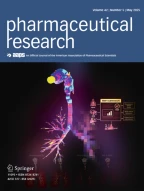262Accesses
ABSTRACT
Identification and characterization of the important roles microRNAs (miRNAs) perform in human cancer is an increasingly active research area. Unfortunately, prediction of miRNA target genes remains a challenging task to cancer researchers. Current processes are time-consuming, error-prone, and subject to biologists’ limited prior knowledge. Therefore, we propose a domain-specific knowledge base built upon Ontology for MicroRNA Targets (OMIT) to facilitate knowledge acquisition in miRNA target gene prediction. We describe the ontology design, semantic annotation and data integration, and user-friendly interface and conclude that the OMIT system can assist biologists in unraveling the important roles of miRNAs in human cancer. Thus, it will help clinicians make sound decisions when treating cancer patients.
This is a preview of subscription content,log in via an institution to check access.
Access this article
Subscribe and save
- Get 10 units per month
- Download Article/Chapter or eBook
- 1 Unit = 1 Article or 1 Chapter
- Cancel anytime
Buy Now
Price includes VAT (Japan)
Instant access to the full article PDF.


Similar content being viewed by others
Explore related subjects
Discover the latest articles and news from researchers in related subjects, suggested using machine learning.REFERENCES
Kobayashi T, Lu J, Cobb BS, Rodda SJ, McMahon AP, Schipani E,et al. Dicer-dependent pathways regulate chondrocyte proliferation and differentiation. Proc Natl Acad Sci. 2008;105:1949–54.
Reinhart BJ, Slack FJ, Basson M, Pasquinelli AE, Bettinger JC, Rougvie AE,et al. The 21-nucleotide let-7 RNA regulates developmental timing in Caenorhabditis elegans. Nature. 2000;403:901–6.
Zhou M, Liu ZX, Zhao YH, Ding Y, Liu H, Xi Y,et al. MicroRNA-125b confers the resistance of breast cancer cells to paclitaxel through suppression of Bak1. J Biol Chem. 2010;285(28):21496–507.
Nakajima G, Hayashi K, Xi Y, Kudo K, Uchida K, Takasaki K,et al. Non-coding microRNAs hsa-let-7 g and hsa-miR-181b are associated with chemoresponse to S-1 in colon cancer. Cancer Genomics Proteomics. 2006;3:317–24.
ACKNOWLEDGMENTS
The authors would like to thank Hardik Shah and Robert Rudnick for helping in software implementation. The authors also appreciate the discussion with Patrick Hayes, Lei He, Wen-chang Lin, Hao Sun, and Xiaowei Wang.
Author information
Authors and Affiliations
School of Computer and Information Sciences, University of South Alabama, 307 University Blvd. N, Mobile, Alabama, USA
Jingshan Huang & Christopher Townsend
Department of Computer and Information Science, University of Oregon, Eugene, Oregon, USA
Dejing Dou & Haishan Liu
Mitchell Cancer Institute, University of South Alabama, Mobile, Alabama, USA
Ming Tan
Department of Cell Biology and Neuroscience, University of South Alabama, Mobile, Alabama, USA
Ming Tan
- Jingshan Huang
You can also search for this author inPubMed Google Scholar
- Christopher Townsend
You can also search for this author inPubMed Google Scholar
- Dejing Dou
You can also search for this author inPubMed Google Scholar
- Haishan Liu
You can also search for this author inPubMed Google Scholar
- Ming Tan
You can also search for this author inPubMed Google Scholar
Corresponding author
Correspondence toJingshan Huang.
Electronic supplementary material
Below is the link to the electronic supplementary material.
ESM 1
(DOCX 257 kb)
Rights and permissions
About this article
Cite this article
Huang, J., Townsend, C., Dou, D.et al. OMIT: A Domain-Specific Knowledge Base for MicroRNA Target Prediction.Pharm Res28, 3101–3104 (2011). https://doi.org/10.1007/s11095-011-0573-8
Received:
Accepted:
Published:
Issue Date:
Share this article
Anyone you share the following link with will be able to read this content:
Sorry, a shareable link is not currently available for this article.
Provided by the Springer Nature SharedIt content-sharing initiative
KEY WORDS
Profiles
- Ming TanView author profile


